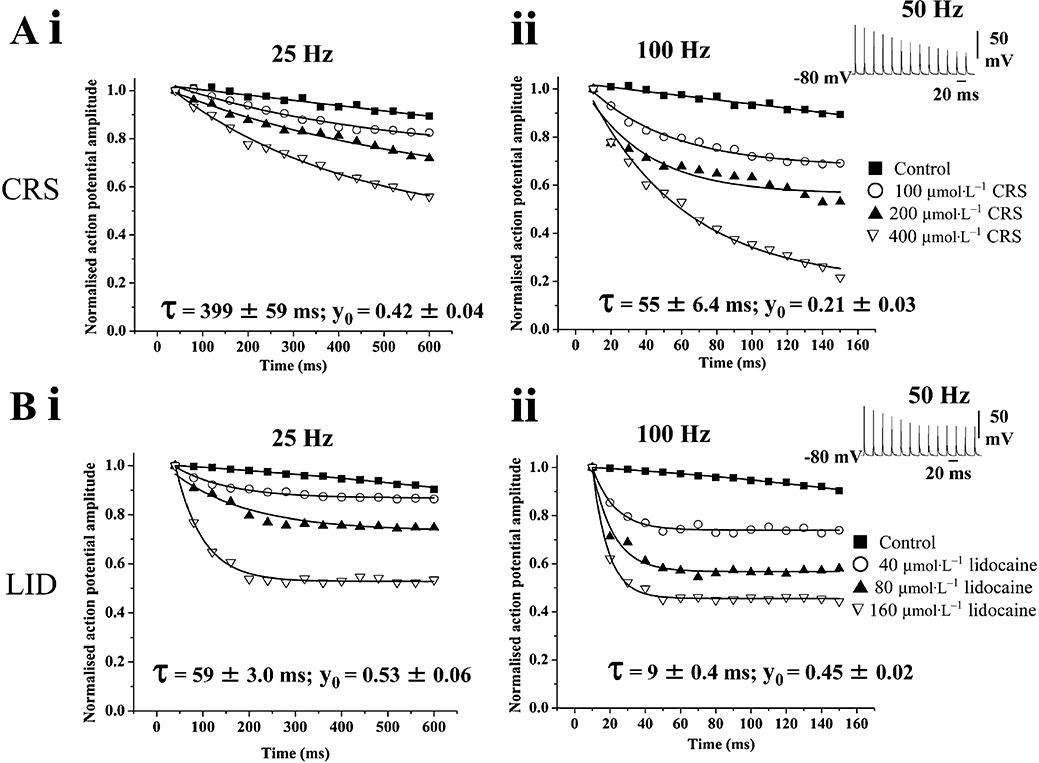Figure 4.

Use-dependent block of Na+ channels by carisbamate (CRS) and lidocaine (LID). Plots comparing the proposed use-dependent Na+ channel-blocking effects of CRS (100–400 µmol·L−1), with those of LID (40–160 µmol·L−1) on peak action potential amplitudes evoked by applying a train of brief depolarizing current injections (1 ms, +2.5 nA) at different stimulus frequencies. Results are plotted as mean action potential amplitude (normalized to control at t= 0) ± SEM versus time; n= 4 for all drug concentrations and frequencies (error bars were within width of points). (A) Concentration- and frequency-dependent effects of CRS at (i) 25 Hz and (ii) 100 Hz stimulus frequencies; inset shows a representative trace of the use-dependent effect of 400 µmol·L−1 CRS at 50 Hz stimulation; (B) shows concentration- and frequency-dependent effects of LID under comparable conditions to (A) at (i) 25 Hz and (ii) 100 Hz stimulation; inset shows use-dependent effect of LID (160 µmol·L−1) at 50 Hz stimulation. Note that for comparable final levels of spike suppression, the onset of block by CRS was notably slower than that produced by LID. Data for 400 µmol·L−1 CRS and 160 µmol·L−1 LID block at 25 and 100 Hz stimulus frequencies were fitted by single exponential functions using a least-squares method. The estimated time constants for block onset (τ) and plateau normalized peak values at the end of the stimulus train (y0) at the maximum concentrations used (derived from the best fits) are shown.
